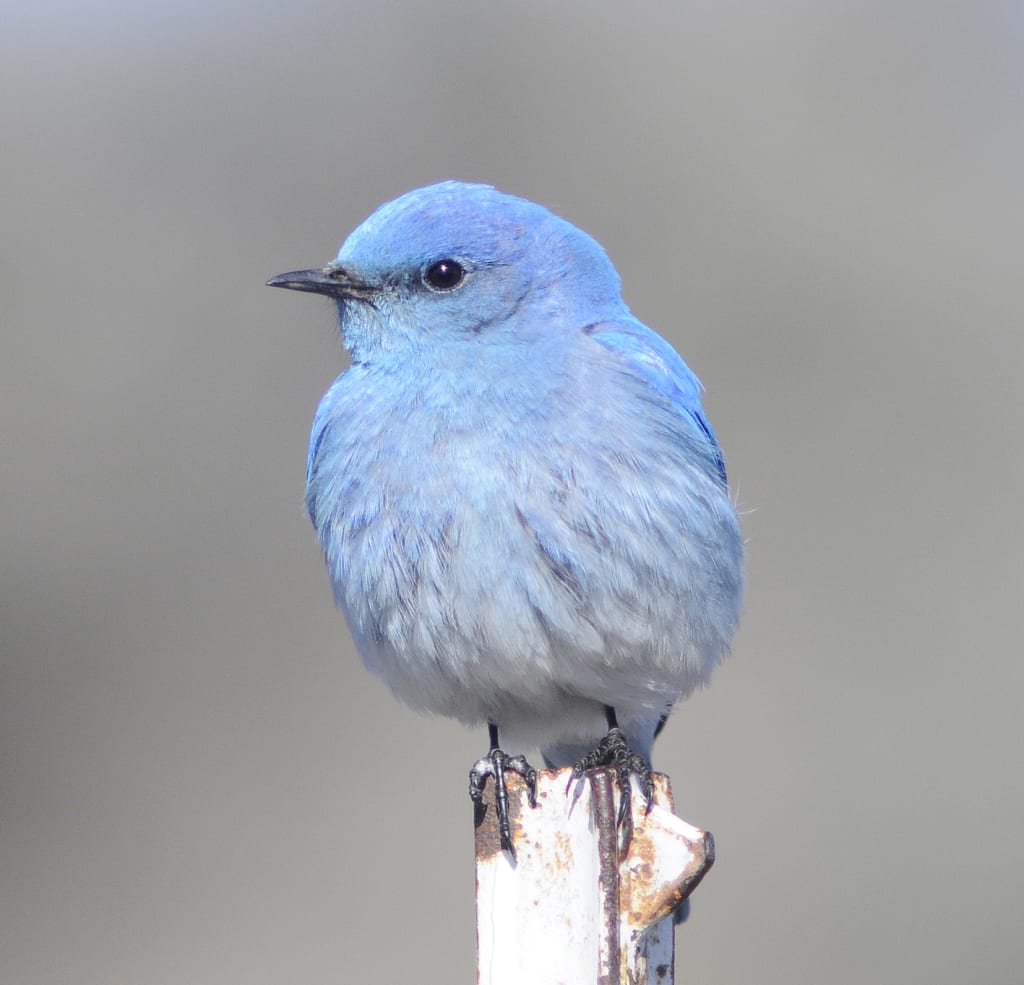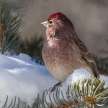
The mountain bluebird (Sialia currucoides) is a medium-sized bird weighing around 30 g, with a length of 16–20 cm. They have black underbellies and red eyes. Adult males have small bills, which are slightly lighter than the bright turquoise-blue below. Sleek blue wings and legs of adult females, white breasts, black crowns, chests, and back. In fresh fall plumage, the female's neck and breast are tinged with red-orange, brownish near to the belly, in contrast to white tail underparts. Their call is a thin ' pocket; ' while their chur chur song has been warbled high. It is nature bird of Idaho and Nevada. It's an omnivore, which can last 6 to 10 years in the wild. We feed spiders, grasshoppers, flies and other insects, and even small berries. Mountain bluebird is an Eastern and Western relative of the bluebirds. These birds loop above the ground and fly down to catch larvae, often with the intention of catching them from a perch. It needs up to eight times the energy it takes to sit on a perch and wait for the first tactic. We primarily feed on insects and berries. We will forage in flocks in winter, although they often feed grasshoppers. Mountain Bluebirds can come in to a platform feeder with live meal worms, fruit, or peanuts. Their breeding range is open country as far north as Alaska in western North America and mountainous regions. We nest in known cavities or in bins of nests. Such birds are less affected by competition for suitable nesting grounds in remote areas than other bluebirds. A monogamous breed is developed by mountain bluebirds. On the male can be seen singing from bare trees. The singing begins at dawn, just before light ascends. The females normally make their own nests. The eggs are white, and medium grey, dark at times. The clutch size is expected to be four to five eggs. Young people are weak and helpless at hatching, and probably have some down. Incubation normally lasts for 14 days and the young will require about 21 days to leave the nest. Both males defend this nest vigorously The mountain bluebird is the National bird of Idaho and Nevada. Mountain bluebirds are cavity nesters, so they may become very preferential to a nest box, particularly if a clutch is successfully raised. We can reuse the same nest too, but not so much. Mountain bluebirds do not abandon a nest unless human activity is seen near to or at the nest. Despite of this they can be banded easily while still in the nest. Mountain Bluebirds are fairly common but from 1966 to 2014, according to the North American Breeding Bird Report, numbers dropped by around 26 per cent. Partners in Flight places the global breeding population at 4.6 million, with 80% living part of the year in the US, 20% breeding in Canada and 31% wintering in Mexico. The species scores an 8 out of 20 on Continental Importance List. Within the U.S .- Canada Stewardship, Mountain Bluebird is a competitor that is not on the 2014 Birds Priority List. Such bluebirds benefited from the western expansion of forestry and agriculture in the late nineteenth and early twentieth centuries, when tree clearing created open space for foraging. Combined with the widespread devastation of wildfires, the resulting reduction in these resources resulted in a drop in the free acreage of the West and a decrease in biodiversity. More recently, as land-use trends have increased, so are the Mountain Bluebirds numbers. Building nest boxes in perfect habitat has also given farming a boost. Populations decrease in areas where trees are too low to create natural nesting cavities and where the number of suitable nesting sites has been reduced by forest and agricultural practises. Competition for breeding sites is high among birds nesting in cavities but being unable to excavate them alone. Mountain, western and more recently Eastern bluebirds are competing over nest boxes as they are expanding their ranges. House Sparrows, European Starlings, and House Wrens are also facing intense rivalry with bluebirds for nest cavities.
About the Creator
MB
I am a bird aficionado and really enjoy spotting them them on hikes. I greatly appreciate the variety of birds cross North America and the world. They are amazing and intelligent creatures, each so unique and with a wonderful life.






Comments
There are no comments for this story
Be the first to respond and start the conversation.